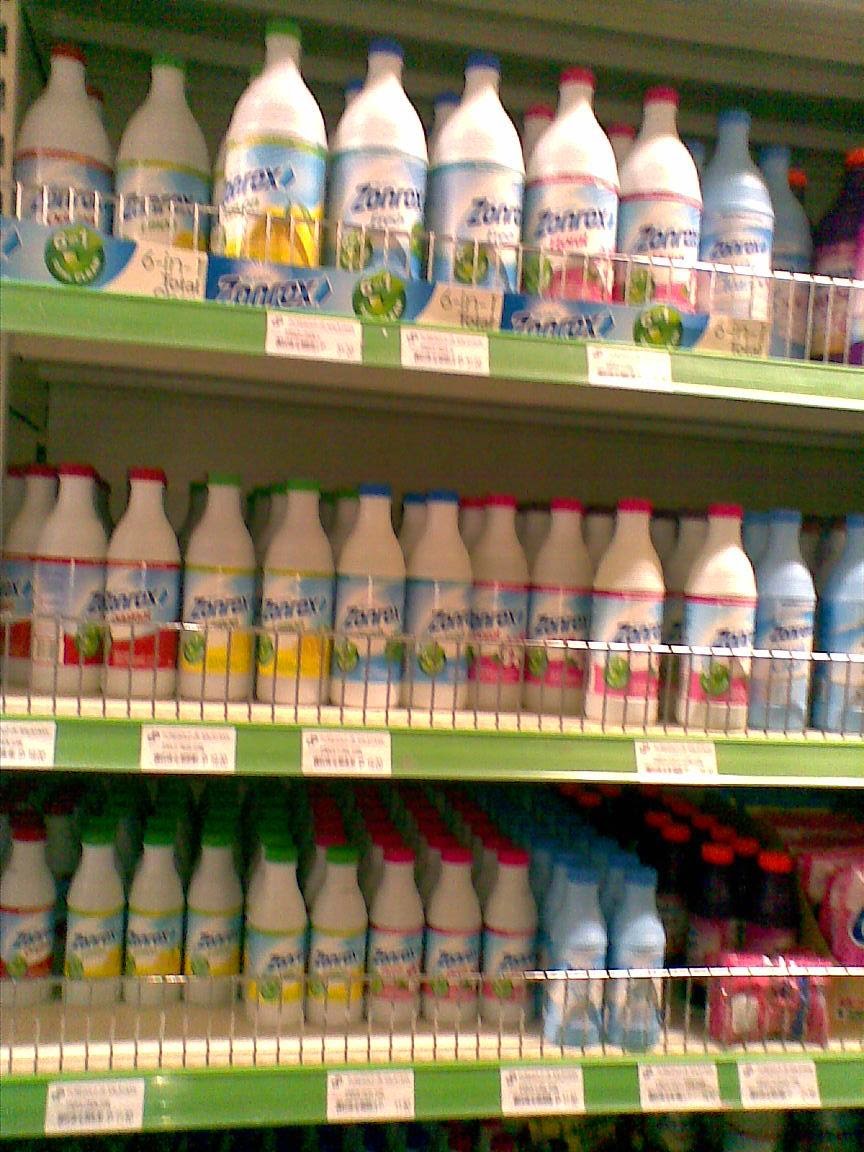Parents Advised to Use Bleach with Care to Prevent Children's Poisoning
The EcoWaste Coalition has drawn the attention
of the public on the number 2 poison for Pinoy kids: sodium hypochlorite.
Popularly known as bleach or clorox, sodium hypochlorite is commonly used as bleaching agent or as a general disinfectant.
“Young children may wrongly think that sodium hypochlorite is a drinking water as it is generally sold in liquid form and appears like water,” noted Thony Dizon, Coordinator, EcoWaste Coalition’s Project Protect.
“Parents should not transfer bleaching or disinfecting agents to beverage containers like mineral water bottles or soft drink bottles,” said Dr. Carissa Dioquino, Head of the UP National Poison Management and Control Center (NPMCC).
Based on in-patient cases and telephone referrals, sodium hypochlorite ranked second among the top 10 poison agents in 2013 for children and youth as documented by the NPMCC with 98 out of 745 cases (13%). Kerosene poisoning ranked number 1 with 274 cases; button batteries ranked third with 23 cases.
"These agents should be stored in secure cabinets preferably outside the house. When swallowed, these poisons cause burns in the mouth, esophagus and stomach. They also cause harm to the skin and eyes when spilled in the face,” Dioquino added.
According to the US Agency for Toxic Substances and Disease Registry (ATSDR), “ingestion of hypochlorite solutions causes vomiting and corrosive injury to the gastrointestinal tract.”
“Exposure to gases released from hypochlorite may cause burning of the eyes, nose, and throat; cough as well as constriction and edema of the airway and lungs can occur,” it said.
“Children may be more vulnerable to corrosive agents than adults because of the smaller diameter of their airways. In addition, they may be exposed to higher levels than adults in the same location because of their short stature and the higher levels of chlorine found nearer to the ground,” the ATSDR explained.
"Sodium hypochlorite solutions can liberate dangerous amounts of chlorine or chloramine if mixed with acids or ammonia,” the ATSDR further said.
To prevent children’s exposure to sodium hypochlorite, the EcoWaste Coalition advised consumers to:
1. Keep bleaching agents or disinfecting solutions out of children’s reach. 2. Store household cleaning agents in a cool place and away from acids and sunlight.
The EcoWaste Coalition also urged consumers to go for non-toxic alternatives for whitening clothes or killing germs like baking soda, vinegar and peroxide-based materials instead of those containing sodium hypochlorite.-end-
Reference:
Popularly known as bleach or clorox, sodium hypochlorite is commonly used as bleaching agent or as a general disinfectant.
“Young children may wrongly think that sodium hypochlorite is a drinking water as it is generally sold in liquid form and appears like water,” noted Thony Dizon, Coordinator, EcoWaste Coalition’s Project Protect.
“Parents should not transfer bleaching or disinfecting agents to beverage containers like mineral water bottles or soft drink bottles,” said Dr. Carissa Dioquino, Head of the UP National Poison Management and Control Center (NPMCC).
Based on in-patient cases and telephone referrals, sodium hypochlorite ranked second among the top 10 poison agents in 2013 for children and youth as documented by the NPMCC with 98 out of 745 cases (13%). Kerosene poisoning ranked number 1 with 274 cases; button batteries ranked third with 23 cases.
"These agents should be stored in secure cabinets preferably outside the house. When swallowed, these poisons cause burns in the mouth, esophagus and stomach. They also cause harm to the skin and eyes when spilled in the face,” Dioquino added.
According to the US Agency for Toxic Substances and Disease Registry (ATSDR), “ingestion of hypochlorite solutions causes vomiting and corrosive injury to the gastrointestinal tract.”
“Exposure to gases released from hypochlorite may cause burning of the eyes, nose, and throat; cough as well as constriction and edema of the airway and lungs can occur,” it said.
“Children may be more vulnerable to corrosive agents than adults because of the smaller diameter of their airways. In addition, they may be exposed to higher levels than adults in the same location because of their short stature and the higher levels of chlorine found nearer to the ground,” the ATSDR explained.
"Sodium hypochlorite solutions can liberate dangerous amounts of chlorine or chloramine if mixed with acids or ammonia,” the ATSDR further said.
To prevent children’s exposure to sodium hypochlorite, the EcoWaste Coalition advised consumers to:
1. Keep bleaching agents or disinfecting solutions out of children’s reach. 2. Store household cleaning agents in a cool place and away from acids and sunlight.
The EcoWaste Coalition also urged consumers to go for non-toxic alternatives for whitening clothes or killing germs like baking soda, vinegar and peroxide-based materials instead of those containing sodium hypochlorite.-end-
Reference:
http://www.atsdr.cdc.gov/MMG/MMG.asp?id=927&tid=192







Comments
Aging Parent Support